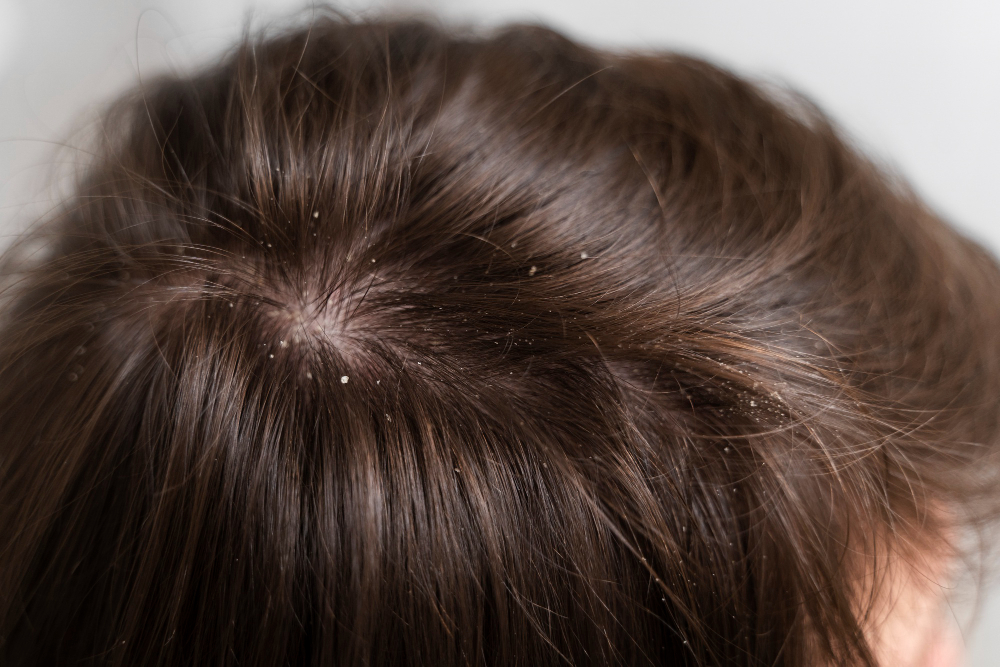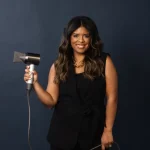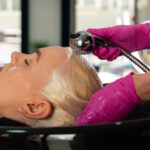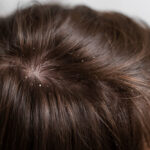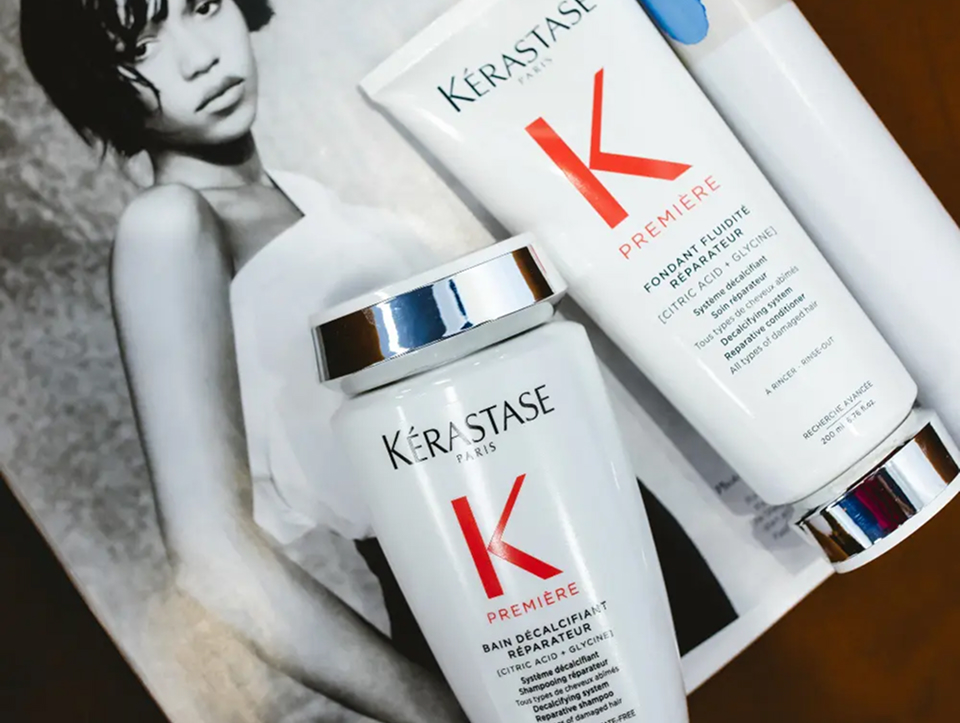Have you noticed your hair looking flat, oily, or weighed down, despite washing it? You might be dealing with scalp build-up, a common cause from styling products, environmental pollutants, and oil.
Learning how to remove scalp build up effectively is essential for healthy, vibrant hair. We specialize in professional scalp therapy treatments designed to remove buildup and restore your hair’s natural vitality.
In this guide, we’ll explore the causes, signs, and expert-approved treatments that help you restore scalp health and keep your hair looking its best.
What is Scalp Build-up?

Scalp build-up occurs when oils, dead skin cells, hair products, and environmental pollutants accumulate on your scalp. Over time, this can lead to:
- Irritation or itching
- Greasy or oily hair
- Flaking or dandruff
- Hair that is prone to breakage or slow growth
🔬Research shows that environmental stressors, including pollution, can disrupt scalp health, triggering irritation, excess sebum, dandruff, and even hair loss.
Common Causes of Scalp Build-Up

Scalp build-up can happen to anyone — and it usually comes from a mix of natural factors and daily habits. Here are the most common causes:
1. Natural Oils (Sebum)
Your scalp naturally produces sebum to keep your hair moisturized. However, when excess oil combines with dead skin cells and sweat, it can clog follicles, resulting in greasy, heavy hair.
👉 Check out our oily hair guide for tips
2. Hair Products
Styling products, such as gels, sprays, mousses, and conditioners, can leave residue behind. Ingredients such as silicones, mineral oils, and waxes are especially prone to coating your scalp and making it harder for your skin to breathe.
👉 Check out our guide on hair care myths to learn why not all products are created equal.
3. Environmental Factors
Air pollution, dust, and even pollen can settle on your scalp, mix with oil, and trigger irritation. Research shows that pollution can increase dandruff, itching, and even hair loss.
4. Hard Water
Mineral-rich water (also known as hard water) can leave deposits on your scalp over time, resulting in residue that regular shampoo may not be able to remove.
5. Skin Conditions
Conditions like seborrheic dermatitis, psoriasis, or eczema naturally cause flaking and scaling, which can add to the build-up.
6. Infrequent Washing
Not cleansing often enough allows oil, sweat, and product residue to pile up — especially if you use dry shampoo frequently.
7. Genetics
Some people are more prone to scalp build-up because of the way their scalp produces oil. If this sounds like you, professional scalp treatments can make a big difference.
✨ Tip: If you’re dealing with stubborn build-up, a scalp therapy treatment can deeply cleanse and restore balance to your scalp.
Signs You Have Scalp Build-Up

You might have scalp build-up if you notice:
- Hair stays greasy or refuses to look clean
- Itchy, irritated, or red scalp
- Flaking or residue on the scalp 👉 learn how to exfoliate to help with scalp health.
- Unpleasant odor from the product or oil accumulation
- Brittle hair and slow growth due to clogged follicles
- Scalp pimples or fungal growth
Proper identification is crucial to effectively tackling buildup.
How to Remove Scalp Build up

1. Wash Your Hair Regularly
Consistent cleansing prevents oil, sweat, and product residue from accumulating.
- Oily hair/scalp: Wash daily or every other day to manage sebum.
- Dry, color-treated, or curly hair: 2–3 times per week (every 3–5 days) is usually enough to avoid stripping natural oils.
💡 Tip: Try the LOC method (Leave-in, Oil, Cream) to lock in hydration while maintaining a clean, balanced scalp.
2. Exfoliate Your Scalp
Your scalp needs exfoliation just as your face and body do. This removes dead skin, excess oil, and product residue.
- Physical exfoliation: Use a soft scalp brush or gently massage your fingertips in circular motions while shampooing.
- Chemical exfoliation: Ingredients like glycolic acid or salicylic acid (AHAs & BHAs) dissolve buildup and help unclog follicles. Start 1–2x per week, adjusting based on sensitivity.
⚠️ Be gentle — over-exfoliation can irritate your scalp and cause dryness.
3. Clarifying Shampoo

A clarifying shampoo provides a deeper cleanse than everyday formulas, removing stubborn residue from silicones, waxes, and hard water minerals.
- Use weekly or bi-weekly, depending on how much product you use.
- If you color your hair, opt for a color-safe clarifying shampoo to avoid fading.
👉 Curious about the difference? Check our guide on scalp detox vs. clarifying shampoo
4. Evaluate Your Products
Many styling products contain heavy silicones, mineral oils, or waxes that coat your scalp. Over time, these lead to dull, weighed-down hair.
- Look for lightweight, water-soluble formulas.
- Rotate your products if you frequently use styling aids.
👉 Worthy Read: 7-Day Scalp Detox Routine
5. Limit Dry Shampoo
Dry shampoo is great in a pinch, but it doesn’t clean your scalp — it simply masks oil. Overuse can trap residue and clog follicles.
- Use it sparingly (1–2 times per week, maximum).
- Always follow up with a thorough wash to cleanse your scalp.
👉 Discover best practices in our How to Use Dry Shampoo.
6. Medicated Shampoos & Professional Help
If you experience buildup accompanied by itching, redness, dandruff, or scaling, you may be dealing with seborrheic dermatitis, psoriasis, or another skin condition.
- Medicated shampoos with zinc pyrithione, ketoconazole, or coal tar can help.
- For recurring or severe issues, consult a dermatologist.
- Professional scalp treatments can thoroughly cleanse, rebalance, and restore the health of your scalp.
Healthy, Voluminous Hair Awaits
By following these steps and seeking professional care when needed, you can:
- Restore hair shine and volume
- Reduce irritation, flaking, and buildup
- Support hair growth from healthy follicles
- Maintain a clean, balanced scalp
👉 Check out our ten tips for the best scalp health
Reclaim Your Scalp Health at Haste
Your scalp deserves the same care as the rest of your body. Remove buildup, rejuvenate your scalp, and restore your hair’s natural beauty.
Take the first step today! Visit Haste Hair for a personalized scalp therapy experience and discover treatments tailored to your hair type. Your journey to vibrant, healthy hair starts now.
FAQ
Why must my scalp be healthy?
To maintain healthy hair, you need a healthy scalp. When your scalp is not healthy, it leads to inflammation and irritation that damages new hair before it has a chance to grow.
Are some hair types more prone to scalp build up?
Yes, some hair types are more prone to buildup. For example, fine hair can accumulate a significant amount of buildup due to the products used to add volume, whereas curly or coily hair tends to produce more natural oils.
How often must I wash my hair to prevent scalp build up?
How often you wash your hair will depend on your hair type, the products you use, and your concerns. Still, washing your hair daily can strip your scalp of its natural oils, while not washing it can lead to buildup. To find a balance, we recommend cleaning your hair once or twice a week, depending on how oily it feels.

